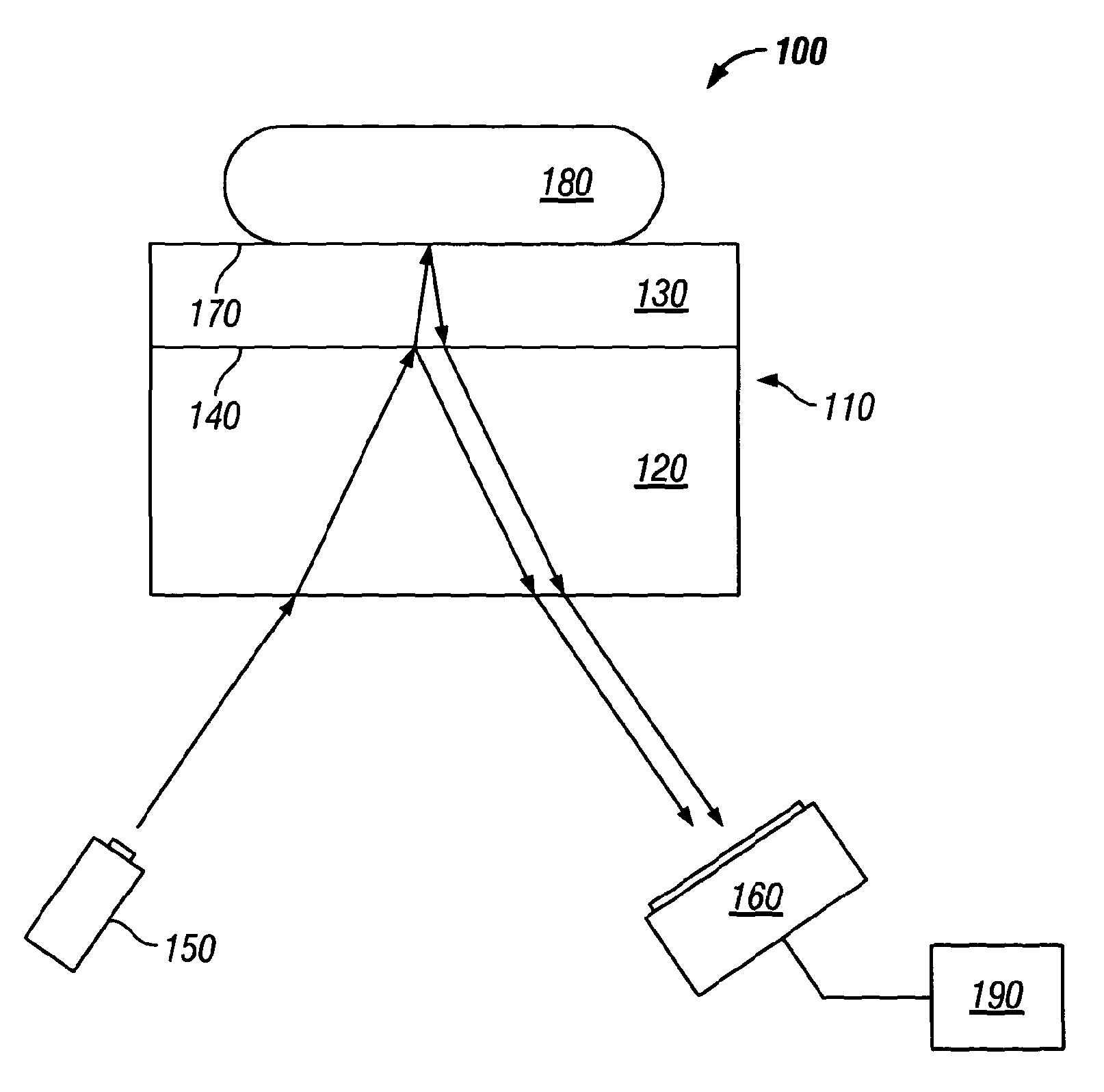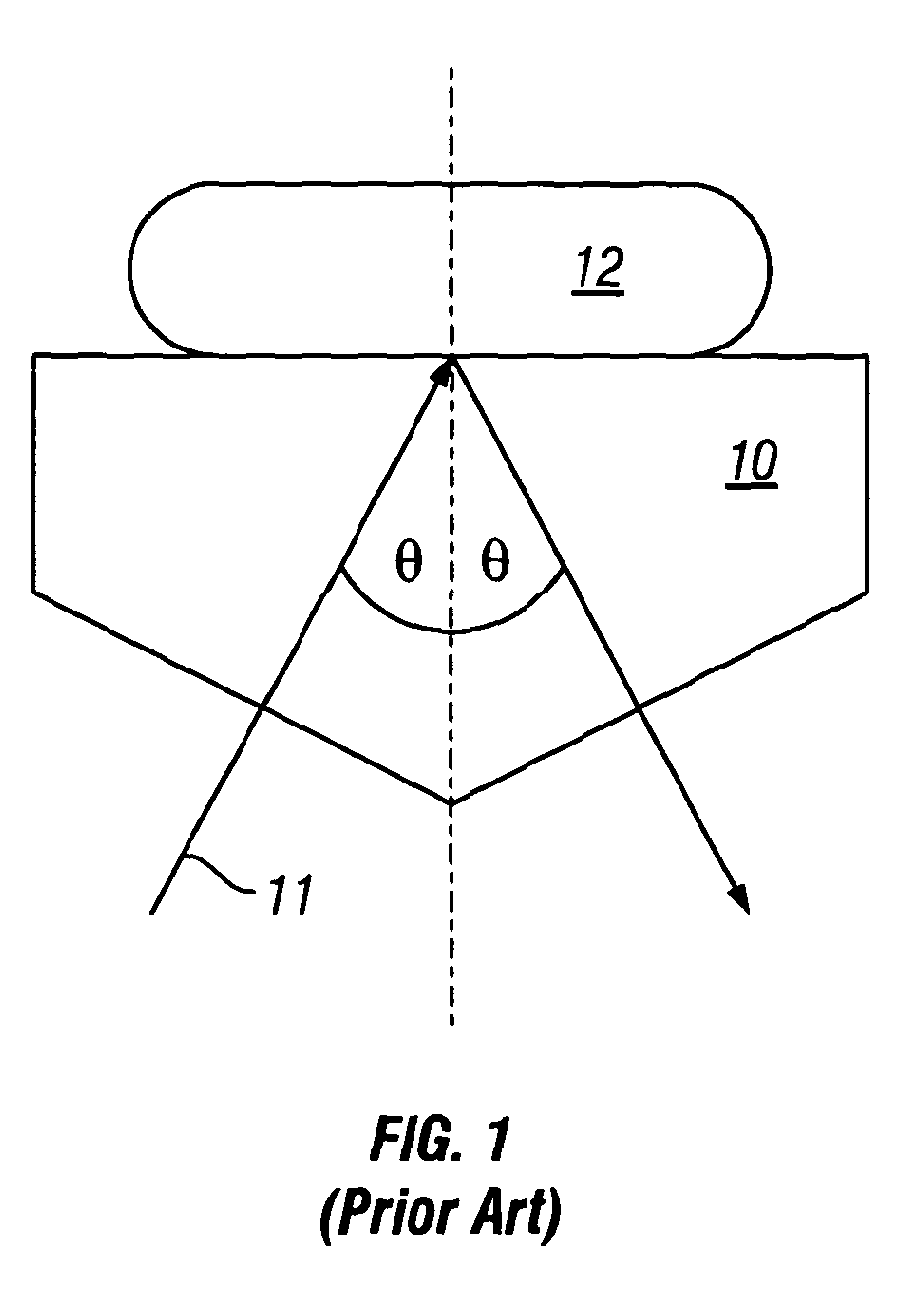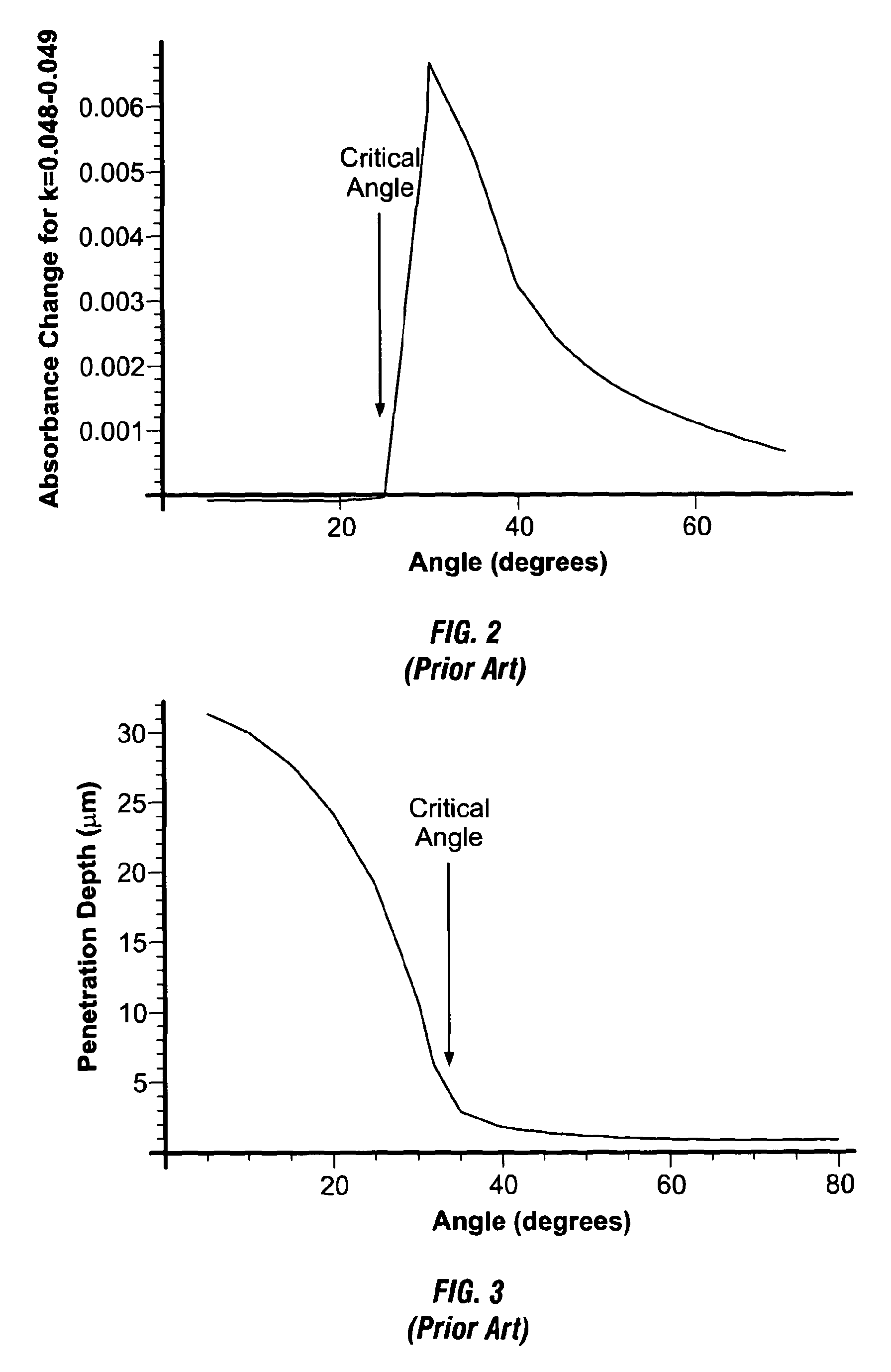Optical assembly and method for determining analyte concentration
an analyte concentration and optical assembly technology, applied in the field of optical assembly and method for determining the concentration of analyte in body fluid, can solve the problems of poor patient acceptance, inability to read during the night or when the patient is otherwise occupied, and impose a considerable burden on the diabetic patien
- Summary
- Abstract
- Description
- Claims
- Application Information
AI Technical Summary
Benefits of technology
Problems solved by technology
Method used
Image
Examples
first embodiment
[0052]Referring to FIG. 4 of the drawings, there is illustrated an optical assembly 100a according to the present invention comprising an optical arrangement 110a, for the non-invasive determination of the concentration of an analyte, such as glucose, in a tissue sample, such as body fluid.
[0053]The optical arrangement 110a illustrated comprises a substantially rectangular cuboid shape however, it is to be appreciated that other shapes may also be used. The arrangement comprises a first, relatively thick layer 120 of calcium fluoride, for example and a second, relatively thin layer 130 of parylene for example, disposed upon the first layer 120 and coupled thereto to form an interface 140 between the first and second layers 120, 130. The first and second layers 120, 130 are substantially transmissive to light in the infra-red region of the spectrum, namely in the wavelength range 1-10 μm, such that light in this wavelength range can pass through the first and second layers 120, 130.
[...
second embodiment
[0064]Referring to FIG. 7 of the drawings, there is illustrated an optical assembly 200 according to the present invention for the non-invasive determination of the concentration of an analyte, such as glucose, in a tissue sample. The assembly 200 comprises an optical arrangement 210 and a broadband light source 150, such as a broadband laser which is arranged to launch laser light having a wavelength characteristic of infra-red wavelengths. The optical arrangement 210 comprises an interferometer comprising a beam splitter 220 which is arranged to partially reflect and partially transmit incident laser light toward a first and second reflector element 230, 240, respectively.
[0065]The reflector elements 230, 240 may be formed of zinc selenide and comprise substantially planar element. The elements 230, 240 are orientated to reflect the light incident thereon back toward the beam splitter 220, substantially along the same path as the incident light. In this respect, the elements 230, ...
PUM
| Property | Measurement | Unit |
|---|---|---|
| concentration | aaaaa | aaaaa |
| thickness | aaaaa | aaaaa |
| wavelength range | aaaaa | aaaaa |
Abstract
Description
Claims
Application Information
 Login to View More
Login to View More - R&D
- Intellectual Property
- Life Sciences
- Materials
- Tech Scout
- Unparalleled Data Quality
- Higher Quality Content
- 60% Fewer Hallucinations
Browse by: Latest US Patents, China's latest patents, Technical Efficacy Thesaurus, Application Domain, Technology Topic, Popular Technical Reports.
© 2025 PatSnap. All rights reserved.Legal|Privacy policy|Modern Slavery Act Transparency Statement|Sitemap|About US| Contact US: help@patsnap.com



